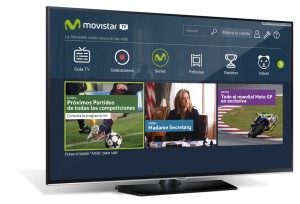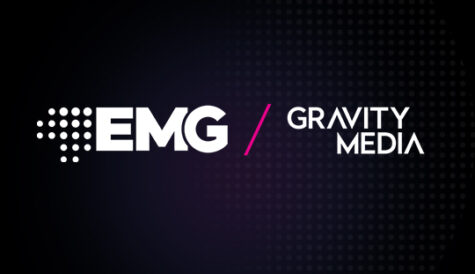Going over the top: recent developments in the OTT space
 Over-the-top and direct-to-customer offerings are becoming increasingly common among pay TV and channel operators alike. Andy McDonald looks at some of the most interesting recent developments in this space.
Over-the-top and direct-to-customer offerings are becoming increasingly common among pay TV and channel operators alike. Andy McDonald looks at some of the most interesting recent developments in this space.
As the television market continues to evolve, more and more service providers are turning to over-the-top (OTT) technology to deliver packages of both live and on-demand channels.
In the UK, Sky first launched its IP-delivered Now TV offering in 2012 as a standalone service – a concept that appears to be gaining momentum elsewhere in the TV industry. In the US, pay TV operator DiSH recently launched its over-the-top delivered Sling TV offering, giving customers a US$20 (Ä18) per-month cloud TV service that consists of 16 channels. Sony rolled out its new cloud-based TV service, PlayStation Vue, in March with an offering of 85 channels, while Apple is hotly tipped to launch an online TV service later this year in partnership with broadcasters including ABC, CBS and Fox.
New cloud-based TV services increasingly seem to make sense in a multi-device world, but changes in viewer activity are also leading pay TV providers to bundle up and deliver their traditional TV offerings in new ways. In Spain, Telefónica is a prime example, with the launch of various Movistar-branded online access options and the release of its full Movistar IPTV service as an application on Samsung smart TVs.
Innovation does not end with service providers and pay TV operators. In a post-Netflix world, channel operators and content makers are keen to get in on the act. HBO has been making headlines with the launch of its US standalone premium streaming service, HBO Now in April. And it is not the only premium US TV network experimenting with a direct-to-customer proposition.
Starz Play Arabia
On April 2, US channel operator and content producer Starz launched Starz Play Arabia – a direct-to-consumer online SVOD service across 17 countries in the Middle East and North Africa (MENA). Discussing the move, Starz chief strategy officer John Penney says that while the firm has traditionally been a “North American and US-focused premium subscription television business,” it saw an opportunity to “deliver IP-distributed premium TV series and movie content to residents in the Middle East.”
In the US Starz claims a combined 57 million subscribers for its flagship Starz and Encore linear channels. While Starz Play does exist in its home market, here Starz uses the online service as a TV everywhere offering – an authenticated online channel for its existing pay TV subscriber base.
Penney says Starz decided to take a different approach in MENA because it had the desire to work in markets that have “not traditionally had broad penetration of pay TV” or that, in terms of demographic, are “seeing an increasing middle class.”
The ability to licence content was also an important consideration, in order for Starz to establish Starz Play Arabia as a “full-bodied service.” Currently the offering includes some 3,000 hours of series and movies combined. While this includes core Starz original programming like Black Sails, Power and Outlander, Penney says the “vast majority” is licensed rather than Starz-originated.
“We spent a lot of time looking at markets around the world. What you want to see is a combination of a consumer demand, so that there are people who are interested in some content service – in this case premium TV series and movies – an evolving if not robust distribution structure – LTE wireless, 4G wireless, fixed broadband – and you also want to see the availability of rights – TV series rights and movies beyond Starz [content],” says Penney.
Starz Play Arabia is live in markets including Bahrain, Saudi Arabia, Kuwait, Oman, Qatar, the UAE, Algeria, Egypt, Iraq, Jordan and Lebanon. Although in many of these markets fixed broadband penetration and internet connection speeds are far behind the those found in developed western markets, Penney says the infrastructure is actually “better than one often thinks”.
“The reason is that mobile has become a dominant transmission means for higher bandwidth services like video. So where you have 4G or LTE video, you immediately have a platform to deliver content services. Those could be audio services, video services, and that ends up covering large swathes of the population,” says Penney. He also points out that in countries like the UAE or Saudi Arabia “you have fairly strong fixed broadband penetration” with home connections expected to rise in the coming years.
The accessibility of mobile video plays well into Starz’s multiplatform strategy in the region, with Starz Play Arabia available at launch on iPhones, iPads, and Android devices, as well as PCs and Macs. Penney says that the firm has no plans to deliver a Starz-branded linear channel in the region today, but says “we do acknowledge that the opportunity can still be there” in the future.
As for its web-powered, direct-to-customer approach, Penney says Starz has no plans to go down a similar route in [icitspot id=”365711″ template=”box-story”]the US. “We’d rather take the course of partnering with our current distributors – cable, satellite and telco,” he says of Starz’s home market. Similarly Penney says it’s not the preference of Starz to look to go OTT in developed markets such as western Europe.
“We actually feel that it’s more important for us to look at the world and find places where television hasn’t been brought to consumers in a convenient low-cost and hopefully engaging fashion,” says Penney. While he claims that Starz is “not in talks specifically” about launching Starz Play in new markets, Penney concedes that the firm does “like the dynamics” of countries that can be found in regions like Latin America or South East Asia. “Our focus is finding the right demographics and the right countries, with the right demand for US and local series and movies to develop a full product set for a market,” he says.
Telefónica’s Movistar
In Spain, Telefónica has used various OTT methods to both broaden the reach and boost the user experience of its Movistar IPTV service. In summer 2013 it launched Movistar TV Go, its TV everywhere offering, primarily aimed at out-of-home and mobile viewing. In December 2014 Telefónica added Movistar Series – a Netflix-style service focused around TV series, which it again offers to existing Movistar customers. Then earlier this year, it launched a full version of its Movistar IPTV service through Samsung smart televisions.
Discussing the Samsung implementation, Fernando Soto, commercial director for Movistar TV, says that the idea behind the launch was to provide a better customer experience by dispensing with the set-top box and delivering direct to television.
“The main point is simplicity at home,” says Soto, who claims that having fewer wires and only one remote control makes the TV experience easier for the end-user. He also says that using the core processing power of the TV set also makes sense, as smart TVs can now contain more memory and better hardware than set-top boxes.
The Samsung deployment followed a six-month development process by a large team from both Samsung and Telefónica in South Korea and Spain, says Soto, who stresses that the Samsung integration marked more than a simple OTT app launch.
“It is absolutely integrated on the system. For example, the number of features that we have on the Samsung smart TV is exactly the same as we have on our set-top boxes. The application is fully operated and some of the experience is exactly the same, but with much more power in the sense that these TV sets are more powerful,” says Soto. “The integration is so deep and is so complex that we cannot put this application in any device as an OTT app,” he adds, claiming that the involved process and the development expense means that Telefónica has no immediate plans to extend the service to other smart TV platforms. “It’s like having another set-top box in our customer base and as you may know, in general terms, IPTV companies don’t want to have very many set-top boxes, because the operation is much more complex,” says Soto.
Though his aim over time is to “try to have also as many customers connected through their own devices,” Soto says that Movistar cannot be so radical as to try and phase out the STB entirely – even though it would save the firm money by not having to provide the set-top hardware. “We will never stop selling set-top boxes, it’s quite impossible,” he says.
However, at the same time Movistar’s multiscreen offering Movistar TV Go is gaining traction. The app, which is available on Android, iOS and Windows mobile devices, is used, or has at least been activated by, around half of Movistar’s total TV customer base, says Soto. Customers often use the service on devices like iPads in the home, but Soto says that peaks in use are overwhelmingly “connected with football matches” with the “most typical use-case when a customer is not at home and there is a match on the TV.”
Movistar Series is an attempt by the firm to offer a premium Netflix-style on-demand service to its existing customers and the service currently has around 100 series, including the likes of Game of Thrones and Breaking Bad spin-off Better Call Saul. Soto says that Movistar Series’ value proposition in terms of its selection of shows is to not just offer the first or last season, but to try and provide “everything, all the content together.”
 While Netflix has made clear its ambition to be a global company by the end of 2016, Soto believes Movistar is in a strong position for when the SVoD rival does change its ‘yet-to-launch’ status in Spain. “Netflix is coming really late in the sense that today we have more than two million customers with set-top boxes. We are offering an SVoD solution with good quality at a good price, and it’s bundled. We have the invoice capability, the billing capability, everything, and we have the content,” says Soto.
While Netflix has made clear its ambition to be a global company by the end of 2016, Soto believes Movistar is in a strong position for when the SVoD rival does change its ‘yet-to-launch’ status in Spain. “Netflix is coming really late in the sense that today we have more than two million customers with set-top boxes. We are offering an SVoD solution with good quality at a good price, and it’s bundled. We have the invoice capability, the billing capability, everything, and we have the content,” says Soto.
Yet one thing that a company like Netflix does provide is the opportunity to access a low-priced OTT offering on a standalone basis. Asked whether Telefónica would ever go down this route, Soto admits “there is a deep divide about that in our organisation. So far we have nothing [deployed]; this is the main point. We are not sure there is a market in Spain for that.”
Now TV
Unlike Telefónica, in the UK Sky has embraced the standalone OTT approach with Now TV. Having first launched in 2012, Casper Atkinson, product director for Now TV, explains that the service has evolved from its first version as a movies-only service where customers could buy a sports pass, to its current iteration of three separate packages of movies, sports and entertainment content.
Now TV Movies today offers more than 1,000 film titles and up to 16 premieres a month for £9.99 (€13.80). Sports fans can get access to all seven of Sky’s linear sports channels through Now TV Sports, paying £6.99 for a day pass or £10.99 for a week pass. Through this viewers can watch live sports including Premier League and UEFA Champions League football, Formula 1 racing, cricket and rugby union.
Now TV Entertainment, at £6.99 per-month, is the latest addition to the service. “About 18 months ago we launched our entertainment pack, so it’s rounding out the proposition,” says Atkinson. “With entertainment we’re up to about 240 box sets, and that’s across 13 live channels – so the big-hitting Sky channels, Sky 1, Sky Atlantic, Sky Living, but also third-party channels as well. In amongst that, Game of Thrones does extremely well for us. We’ve got seasons one to four up at the moment, and we had the season five premiere.”
Ahead of the launch of Now TV almost three years ago, Sky said that the service would sit alongside its current subscription pay TV service and be aimed at “the 13 million UK households who do not currently subscribe to pay TV.” So far this seems to be working.
“The important thing is [that from] what we’re seeing it’s not cannibalising the core Sky base,” says Atkinson. “When we survey our base, 90% of our customers have said they’d never considered Sky at all. It’s a way of reaching those households yet to take pay TV. It’s giving customers the Sky content without the commitment of a contract. It’s just a new way of monetising our investment in content as we grow our revenues.”
Though Sky won’t reveal user numbers for Now TV, Atkinson says that its customer base “has tripled in the last year or so”. Customer satisfaction also appears to be high. “Over the last year, the number of customers who are buying multiple passes from us has quadrupled. That, as an indicator, is I think pretty good,” he says.
The launch of Now TV was a bold move by Sky, but the concept seems to be winning support elsewhere in the pay TV market, as seen with Sling TV in the US. Sky itself also seems committed to its OTT experiment. Speaking on Sky’s last earnings call, company CEO Jeremy Darroch said it would launch a “next generation” version of Sky’s Now TV box later this year and roll out a similar box in Italy, having already done so in Germany in December. Sky first launched its £9.99 Roku-powered Now TV box in the UK back in 2013 in a bid to make the service easily accessible on TV sets, and it is one of the many devices that currently supports the service.
Asked whether pay TV operator launches of standalone OTT services could now be a wider industry trend, Atkinson says: “The opportunities are there. The big advantage of delivering content over the internet, over the cloud, is that it lowers the barrier to entry.”
At Roku, vice-president of pay TV Andrew Ferrone agrees. Following the release of Sky’s Now TV box, Roku launched a programme called ‘Roku Powered’ last September, aimed at licensing the technology that powers its streaming platform to other pay TV service providers outside the US. “If I’m successful in my job you’ll see more and more of these partnerships being announced over time as we continue our conversations around the world,” says Ferrone. He claims that there are deals to be done with pay TV providers, even if they do not intend to launch standalone OTT services. “The Time Warner pay TV service is available as an app on Roku. What that means is access to 300 linear channels of TV [and] over 5,000 VoD titles. It quickly, after its launch, became a top 10 app on Roku and to access that app you need to be a Time Warner Cable subscriber, so it’s very much a complimentary way of accessing your existing cable TV subscription with all the benefits of Roku,” says Ferrone.
For Ferrone, there is a clear move towards IP delivery. He says that in the future “we believe that all content will be streamed” and claims “we also believe how an operator chooses to package and offer their content over streaming – whether it’s geographically limited, available broadly to anyone with an internet access with any given territory – largely depends on their specific strategy.”
Though traditional linear TV is not at risk of disappearing overnight, the internet is already having a profound effect on the broadcast industry. Companies that are adapting now to new viewing patterns and embracing online delivery options look well placed to prosper in the not-so-distant, internet-first future.



